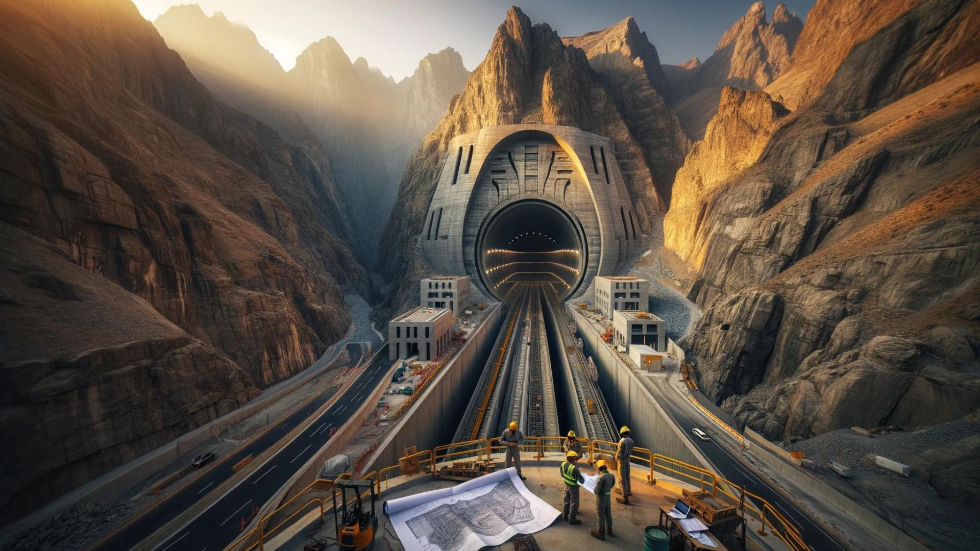The Delaware Aqueduct, constructed in 1944, holds the title as the longest continuous tunnel in the world. Spanning 85 miles (137 km) from its origin in the Rondout Reservoir in New York’s Catskill Mountains to the Hillview Reservoir in Yonkers, New York, this marvel of civil engineering is crucial to supplying New York City with more than half of its daily water needs. The aqueduct’s historical and practical significance is immense, but what is often overlooked is how this singular project fits within a broader framework of historicism, infrastructural trends, and the evolving philosophy surrounding large-scale public works projects. Understanding the Delaware Aqueduct within this critical lens reveals its function not just as a piece of infrastructure, but as an emblem of a shifting paradigm in how societies view and prioritize public utilities.
A Historical Perspective: The Role of Historicism in Infrastructure Projects
To grasp the significance of the Delaware Aqueduct, one must first consider the historical context of its construction and the ideological currents that influenced its design and purpose. During the early to mid-20th century, the United States was heavily invested in grand infrastructural projects that demonstrated technological prowess and civic ambition. These projects, often inspired by the philosophical movement of historicism, sought to balance functionality with symbolic representation. Historicism, broadly defined, is an approach that emphasizes the significance of history and historical context in understanding the present and shaping the future. In the realm of architecture and engineering, historicism often entails a reverence for the monumental undertakings of the past and a desire to replicate or surpass them.
The Delaware Aqueduct, though primarily functional in its design, embodies this historicist mindset. Its scale is reminiscent of the Roman aqueducts, which were not only feats of engineering but also symbols of the power and longevity of the Roman Empire. By constructing a water supply system on an unprecedented scale, New York City was making a statement about its status as a modern metropolis capable of overcoming natural limitations to support its burgeoning population. The aqueduct’s capacity and length were unparalleled at the time, signaling that the city was not merely content with incremental improvements to its infrastructure but was intent on making a bold leap forward—one that would secure its place as a global center of industry, commerce, and culture.
Plausible Specific Reason for Construction: Addressing Population Growth and Ensuring Public Health
The construction of the Delaware Aqueduct was not an act of hubris or ambition alone; it was driven by a specific and urgent need. New York City’s rapid population growth in the early 20th century necessitated an expansion of its water supply system. Between 1900 and 1940, the city’s population swelled from approximately 3.4 million to nearly 7.5 million people. This exponential growth placed immense pressure on existing water infrastructure, which was already struggling to meet demand.
Moreover, public health concerns were a major impetus behind the aqueduct’s construction. In the late 19th and early 20th centuries, the link between clean drinking water and public health had become widely understood. The aqueduct’s completion, therefore, was not just about providing more water but ensuring that this water was of a high quality. By sourcing water from reservoirs in the comparatively pristine Catskill Mountains, the Delaware Aqueduct would help reduce the incidence of waterborne diseases in the city, thereby improving overall public health and quality of life.
The Longest Tunnel in the World: An Achievement of Engineering and Persistence
The construction of the Delaware Aqueduct was a daunting endeavor. Engineers had to contend with difficult geological conditions, including solid bedrock and high-pressure water tables, which made tunneling a slow and hazardous process. Nonetheless, the aqueduct’s completion in 1944 represented a triumph of engineering, establishing a standard for long-distance water transportation that has yet to be surpassed.
The aqueduct’s design is deceptively simple: it is a pressurized tunnel, 13.5 feet in diameter, that relies on gravity to convey water over its entire length. However, this simplicity belies the complexity of its construction. Unlike the traditional open-channel aqueducts of antiquity, the Delaware Aqueduct operates entirely underground, requiring advanced tunneling techniques and precise engineering to ensure that water flows unimpeded across its 85-mile span. Its construction involved drilling through solid rock, navigating below rivers and valleys, and managing the internal pressure to prevent leaks and collapses.
Recent Trends in Infrastructure: Rehabilitation and Resilience
While the Delaware Aqueduct was a groundbreaking project when first completed, it is not immune to the passage of time. In recent decades, significant leaks have been discovered along its length, prompting concerns about the aqueduct’s long-term viability. In response, New York City has undertaken a massive repair initiative known as the Delaware Aqueduct Bypass Tunnel Project, slated for completion in 2023. This $1 billion project involves constructing a new two-and-a-half-mile-long bypass tunnel that will divert water around the most heavily leaking section of the original aqueduct.
The necessity of such repairs speaks to a broader trend in modern infrastructure projects: a focus on rehabilitation and resilience. Whereas mid-20th century public works projects often emphasized expansion and new construction, contemporary efforts prioritize the maintenance and reinforcement of existing systems. This shift is driven by several factors, including financial constraints, environmental considerations, and a heightened awareness of the potential for catastrophic failures in aging infrastructure.
The Delaware Aqueduct Bypass Tunnel Project is a prime example of this trend. Rather than building an entirely new aqueduct, the city has opted to enhance the existing structure, preserving its historical significance while ensuring its continued functionality. This approach reflects a more sustainable and pragmatic philosophy, one that recognizes the value of legacy infrastructure and seeks to extend its lifespan through careful intervention and modernization.
The Delaware Aqueduct’s Legacy and Its Relevance Today
The Delaware Aqueduct stands as a testament to the power of human ambition and the capacity of engineering to shape the natural world in service of society. Its construction was a monumental achievement that addressed critical public health needs and secured New York City’s water supply for generations. However, the ongoing efforts to repair and maintain the aqueduct also highlight the evolving nature of infrastructure development, where preservation and resilience are now paramount.
By understanding the Delaware Aqueduct in the context of historicism and recent infrastructural trends, we gain a deeper appreciation for its role not just as a water supply system, but as a living piece of history that continues to serve and adapt to the needs of a dynamic and ever-changing city. The aqueduct’s story is far from over, and its lessons are more relevant than ever as societies grapple with the complexities of maintaining and modernizing the essential systems that underpin urban life.
No comments yet.








